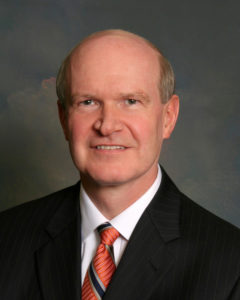At last week’s Senate Banking Committee hearing, Senator Warren challenged banking regulators about their oversight of bank mergers.
Warren told the FDIC and OCC leaders the data indicate the regulators have “no credibility” when it comes to merger supervision.
“This has turned into a check the box exercise where the outcome is predetermined,” said Warren, who plans to introduce legislation to revamp the bank merger process.
“Our regulators have a job to do and it’s our job here in Congress to make sure they do it,” Warren said.
Her observations/questions included the following as reported in the CUToday article:
“Community banks are being gobbled up. The market is being dominated by big banks. There is more concentration, higher costs for consumers, and greater systemic risk, and it is happening in plain view of the federal agencies whose job it is to keep our communities safe.”
In a question directed at the FDIC Chair McWilliams: “The FDIC has a searchable database of all merger applications received since 2013, and there have been 1,124 such applications. Out of those, how many has the FDIC denied?” The total number of denials for any reason whatsoever?” Before McWilliams could respond, Warren said, “It’s zero.”
Is the credit union system vulnerable to this political critique?
Here is a current case. The $52 million South Division Credit Union has called a special members’ meeting on August 30 to approve its merger with Scott Credit Union, both Illinois state charters. Is this just another “ordinary” merger announcement?
The Credit Union’s Website Promises
Since 1935 South Division Credit Union, headquartered in Cook County, IL, has been guided by these founding principles:
To meet the financial expectations and needs of the Members by providing the highest quality products and services, delivered with a sense of professionalism, friendliness, and respect for the individual Member and their common financial bond with one another. The Next Evolution in Personal Banking
Member-Focused Attention Meets Diverse Banking Options
As an open-to-the-public, not-for-profit institution, our unique focus is on you, the consumer. Our end goal is to provide service that’s customized uniquely to you, backed by offerings that address all of your banking needs.
Our credit union offers a complete array of products and services to our Members —checking, savings, debit and credit cards, vehicle and consumer loans, money market accounts and certificates of deposit, along with a variety of mortgage products.
Member Ownership
Unlike at a bank, you’re not just another “customer” at South Division Credit Union. You’re a Member with a say in everything that we do. And what we do is strive to add more value for our well-deserving Members. As a nonprofit, rather than pocket any profits, we pour them back into the institution to provide better rates and additional benefits for you.
SDCU is owned and democratically operated by our Members, who elect our all-volunteer Board of Directors. In turn, the Board represents our Member-owners’ interests in credit union policymaking.
Open to Anyone — Become a Member Today!
What South Division is Telling Members Now
In the July 14, 2021 Notice of Special meeting sent to members, the credit union gave the following explanation for going out of business:
The directors of the participating credit unions have concluded that the proposed merger is desirable for the following reasons: South Division Credit Union has not grown in size or membership participation for several years and has been faced with increasing operational, regulatory and compliance expenses; lack of managerial expertise, aging Board of Directors and no effective succession plans. We believe a merger would offset these trends by offering South Division Credit Union’s members access to an array of new services, more modern account management systems, improved remote electronic access for lending programs, better savings and loan rates, and additional facilities.
Voting by Proxy: A Foregone Outcome
The Notice continues: The merger must have the approval of a majority of members of the credit union who vote on the proposal. . .Illinois permits voting on merger proposals only at the meeting or by proxy. If you DO have a proxy on file at the credit union, to vote in FAVOR of the merger, you may attend and vote in person at the meeting or, do nothing and the Board of Directors will vote in favor of the merger in your stead.
To vote AGAINST the merger, you must either attend in person and vote at the meeting. . . If there is no proxy enclosed with this notice, you have a proxy on file with the credit union, and to vote NO, you must revoke that proxy by giving written notice to the board secretary. . .
What is Left Unsaid
Scott Credit Union is a $1.5 bn, strong performing credit union located in Southern Illinois. Its main office is 240 miles, a five-hour drive from South Division’s headquarters in Evergreen Park.
Scott founded in 1943 at Scott Air Force base, sits across the Mississippi river from St. Louis. Its multi-county southern Illinois charter is in a very different economic, social, demographic and political environment from the Cook County, Evergreen Park-based credit union. The combination would appear to be an act of charity by Scott. The four small branches of South Division are anything but a viable foothold in the greater Chicago market.
In addition to South Division’s board and management confession of their leadership shortcomings—aging board, no succession plan, managerial inexperience-there is the question of their fiduciary oversight.
In 2020 the credit union reported a loss of almost $2.0 million reducing the net worth from 14% to 8.4% in just one year. The major reason for the loss was an increase of over $1.0 million in salaries and benefits above the $1.2 million of the prior year. What were these payments for? Was staff helping themselves to the net worth prior to announcing a merger where such payments would have to be disclosed?
A Challenge for the Credit Union System
Both the Illinois credit union supervisor and the NCUA regional director signed off on this merger. Are they OK with the $2.0 million loss in 2020, and therefore welcome to another credit union taking this emerging problem off their hands? Were local credit unions approached and turned this “opportunity” down? How did Scott Credit Union end up with the short straw?
Where are the other components of the credit union system as this 85-year old credit union decides to close: the league, the vendor business partners, the sponsors? Are there no other leaders or groups in the community willing to step up to this challenge?
The promises on the credit union’s website recruited over three generations of members. Is this legacy of failure the best option the cooperative system can devise for these members, their children and grand children? Because of the Board’s proxy voting process, the members will have no say in this dissolution.
When Collaboration is Most Needed
The credit union system was founded and built by collaboration. No credit union would exist today without sponsor support, volunteer effort, member loyalty and system provided solutions. But when it comes to ending a charter, collaboration seems nonexistent. Without all-hands-on-deck participation in these decisions, the ability of members to trust and respect their credit union’s choice to dissolve, is suspect. Leaders at every level of the system are abandoning this charter at a most critical time.
This merger is based on a guilty plea of incompetence. The 2020 salary payouts raise a question of integrity. The process is devoid of “any respect for the individual Member and their common financial bond with one another.” (web site purpose statement)
Mergers in circumstances like this undermine the cooperative system’s reputation for acting in the member’s interest. These credibility stains cannot be washed away no matter how competent or well-meaning the continuing credit union’s intent.
One more credit union charter gone, one more hole in the cooperative boat. Will the sinking ever end? How will Senator Warren or other members of the committee react when they see this example of a cooperative merger?


